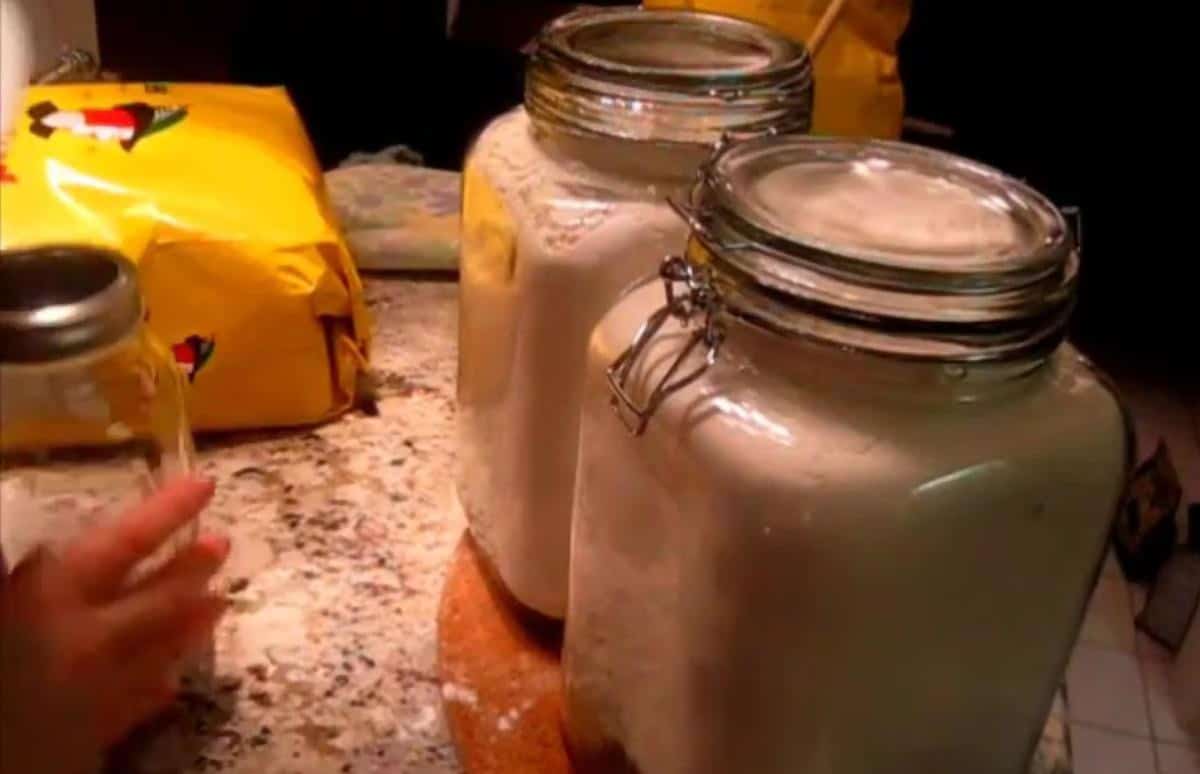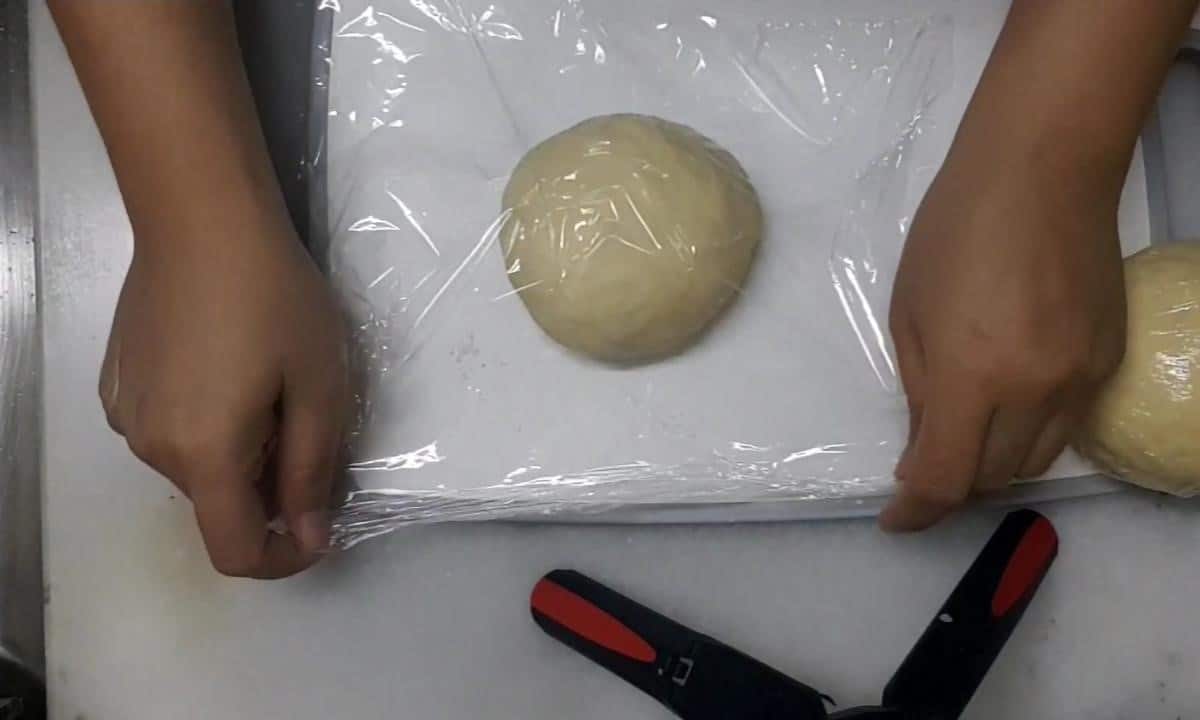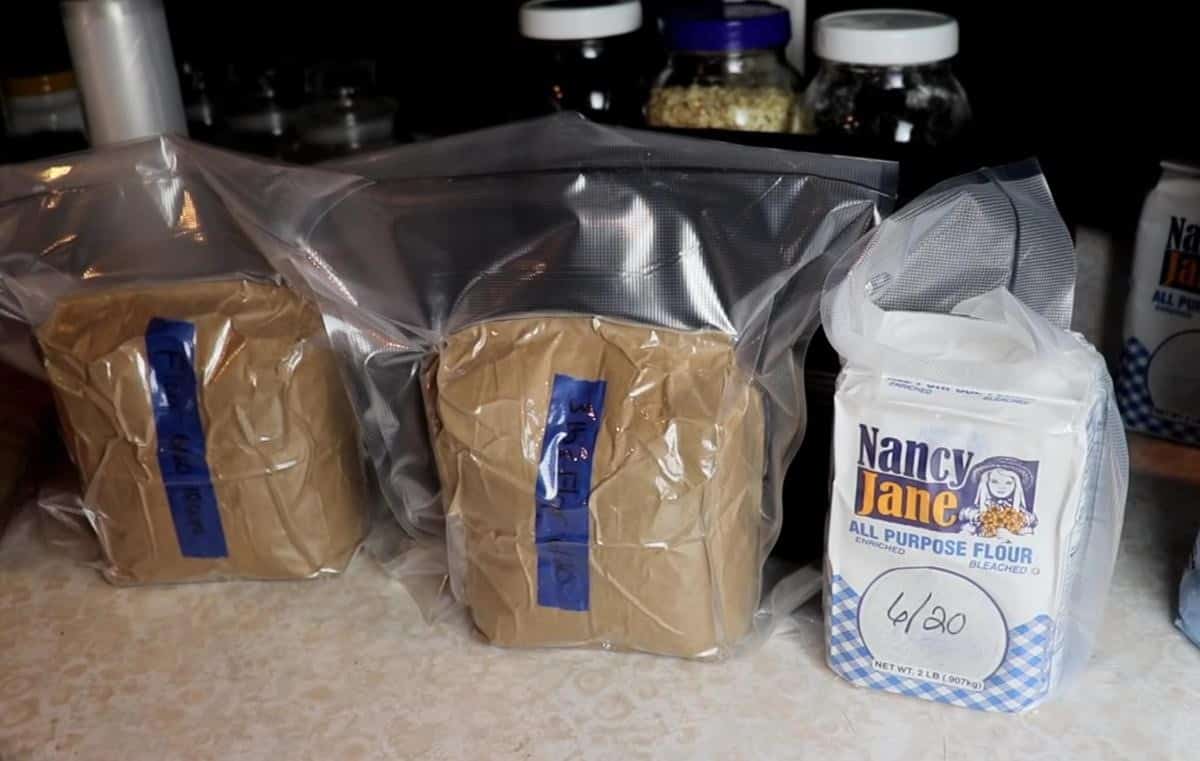The corn Masa is used widely to make various dishes, like tamales, tortillas, pupusas, and nachos. But sometimes, the fresh Masa (dough) or the Masa Harina (the flour used to make the dough) are left unused and kept in the pantry for a long time.
Therefore, “How long does Masa last?” and “How to improve their shelf life?” are two common questions.
The Masa (Dough) can last for a maximum period of 3 days if kept in a cool and dry place. If kept at room temperature, it gets reduced to 12 hours.
The Masa Harina (Flour) can ordinarily last for 9-12 months.
However, there are certain ways to improve the shelf-life of Masa and Masa Harina. They are:
- Keeping them in an air-tight container or a vacuum-sealed bag at a cool place
- Freezing the Masa Dough to increase its lifespan from 3 days to 3-6 months
- Freezing the Masa Harina to extend its lifespan by 1-2 months and remove the bugs
- Sieving the Masa flour on a weekly basis in the winter or rainy season
- Covering the masa flour with a Tupperware container or wrapping them in a Saran wrap
What is Corn Masa?

Corn Masa or Masa Preparada is a staple of Mexican and Latin American cuisine. It is a type of corn dough that is used to make a variety of things ranging from corn tortillas and dessert tamales to a host of other Mexican treats.
There are two ways to prepare it – either by adding lard or water to Masa Harina (Corn flour) or making it from hominy, which is dried corn soaked in an alkaline solution of water and calcium hydroxide.
One can also purchase fresh corn Masa, but it isn’t easily found. It includes both coarse ground and smooth ground doughs. The former is used mainly for corn tortillas, while the latter for tamales.
How long is Masa good for?
Masa is a highly perishable food item and can’t be stored for long. Very often, it starts to ferment if left unused for two days. It can stay fresh for 3 days at max if kept in a cool, dark place with minimal air exposure.
However, if Masa is to be used for tortillas, then it should be kept at room temperature. The tortillas do not split or crack when it is pretty warm. But this has a drawback too. The life of the dough gets reduced to 12 hours, after which it not only loses its taste but might also pose health risks.
How to know if Masa has gone bad?
If the Masa has dried or tasting sour and such sourness is different from the purposefully added sour taste, or if there is a growth of mold on it, it means it has turned bad.
How long does Masa Harina last?
The Masa Harina does not go bad or expires per se but loses its taste and efficacy over time. Still, it lasts longer in comparison to wheat or any other flour.
It usually lasts for a period of 9 months and might stay fresh even for a year if kept in an air-tight container under controlled amounts of light and minimum temperature fluctuations.
It must, however, be kept in mind that this flour is highly susceptible to moisture and forms mold on coming in contact with it.
Besides, bugs may also be a determining factor.
How can you tell if corn flour is bad or spoiled?
To assess whether the Masa flour is fresh or not, smell it. If there is no odor, it means the flour is fresh, but if it smells bad, it is an indication that it is stale. You might even notice bugs crawling all over your pantry .Fogginess and discoloration are another two signs. Stale flour tastes musty and sour.
Way to Improve Masa (Dough) Shelf life

Though a fresh Masa lasts only for 3 days, its lifespan can be improved by freezing.
Freezing the Masa can keep it fresh for about 3-6 months. If packed carefully and then frozen, it remains in excellent condition, and one may defrost and use it anytime.
One can either freeze the Masa in the desired shape (tortillas, tamales, or whatever one intends to make with it in the future) or in its original form.
However, freezing pre-shaped ones can result in the dough lasting for nearly 6 months. It is important to freeze them separated from one another using plastic wrap or parchment paper because if not done so, they might stick together and make big clumps.
If there are no prior plans, the dough may be frozen unshaped. In this case, it stays good for approximately 3 months.
But the freezing process sometimes breaks down the structure of the unshaped dough, and it no longer remains malleable. To avoid this, one can freeze small balls of the dough instead of one large dough ball in the same manner as stated for shaped ones.
How to Defrost Masa?
Defrosting Masa mainly depends upon the way one freezes it.
Tortilla-shaped (or alike) doughs take only about 30 minutes to 1 hour to defrost. They defrost faster if kept individually and not in a stack.
Those that are tamale or gordita-shaped may be cooked even directly, or one can wait for them to defrost.
But if kept as one single dough ball, it needs to be shifted to the refrigerator from the freezer the day before its use. If it is to be used in a few hours, it may be kept on an open counter to let it defrost naturally, or else, one can use the microwave if needed. The only problem with keeping it open is the bacteria attack.
Ways to Improve the Shelf Life of Masa Harina

For an improved shelf life of Masa Harina, it should be kept away in an air-tight container at a place where there is no direct sunlight, minimum/no moisture, and the temperature is low to moderate.
Freezing may also extend its lifespan by 1-2 months, but it mainly serves to keep the pests out since the temperature inside a freezer is inhospitable for them. Besides, one must sieve the flour at least once a week, especially during the summer and the rainy season, to keep it safe from insects and worms.
Conclusion
The Corn Masa (dough) lasts for about 3 days, while the Masa Harina (flour) may last for about 9-12 months. Although they are better than other doughs and flours, they may last even longer if kept in a cool, dry, and dark place. Moreover, freezing can help the dough stay fit for consumption even after 3-6 months.
